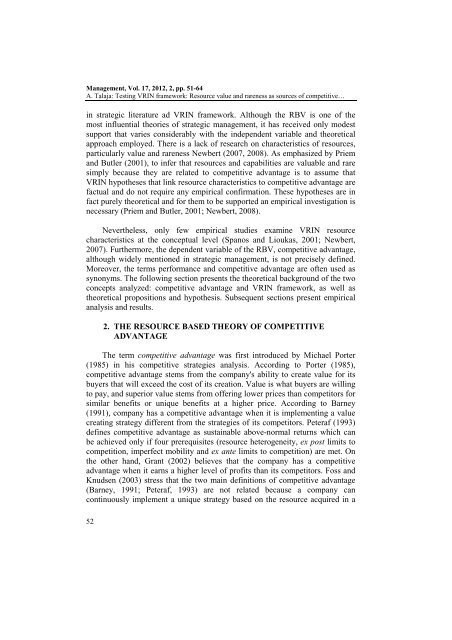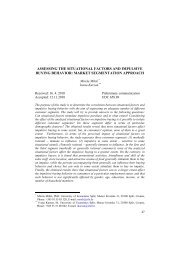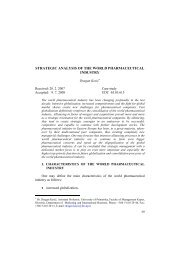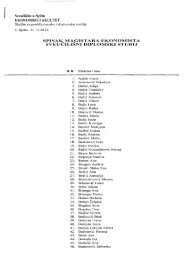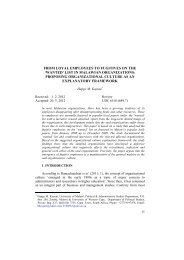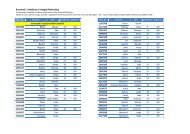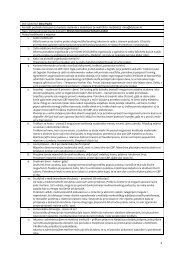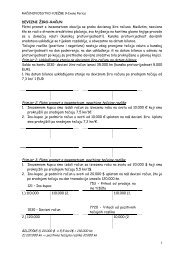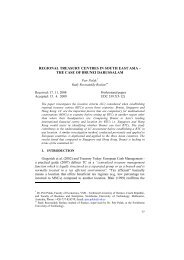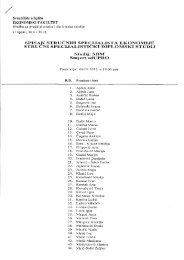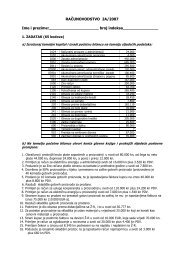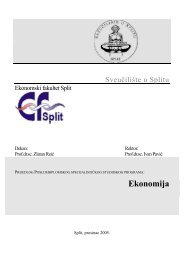TESTING VRIN FRAMEWORK: RESOURCE VALUE AND ...
TESTING VRIN FRAMEWORK: RESOURCE VALUE AND ...
TESTING VRIN FRAMEWORK: RESOURCE VALUE AND ...
- No tags were found...
You also want an ePaper? Increase the reach of your titles
YUMPU automatically turns print PDFs into web optimized ePapers that Google loves.
Management, Vol. 17, 2012, 2, pp. 51-64A. Talaja: Testing <strong>VRIN</strong> framework: Resource value and rareness as sources of competitive…in strategic literature ad <strong>VRIN</strong> framework. Although the RBV is one of themost influential theories of strategic management, it has received only modestsupport that varies considerably with the independent variable and theoreticalapproach employed. There is a lack of research on characteristics of resources,particularly value and rareness Newbert (2007, 2008). As emphasized by Priemand Butler (2001), to infer that resources and capabilities are valuable and raresimply because they are related to competitive advantage is to assume that<strong>VRIN</strong> hypotheses that link resource characteristics to competitive advantage arefactual and do not require any empirical confirmation. These hypotheses are infact purely theoretical and for them to be supported an empirical investigation isnecessary (Priem and Butler, 2001; Newbert, 2008).Nevertheless, only few empirical studies examine <strong>VRIN</strong> resourcecharacteristics at the conceptual level (Spanos and Lioukas, 2001; Newbert,2007). Furthermore, the dependent variable of the RBV, competitive advantage,although widely mentioned in strategic management, is not precisely defined.Moreover, the terms performance and competitive advantage are often used assynonyms. The following section presents the theoretical background of the twoconcepts analyzed: competitive advantage and <strong>VRIN</strong> framework, as well astheoretical propositions and hypothesis. Subsequent sections present empiricalanalysis and results.2. THE <strong>RESOURCE</strong> BASED THEORY OF COMPETITIVEADVANTAGEThe term competitive advantage was first introduced by Michael Porter(1985) in his competitive strategies analysis. According to Porter (1985),competitive advantage stems from the company's ability to create value for itsbuyers that will exceed the cost of its creation. Value is what buyers are willingto pay, and superior value stems from offering lower prices than competitors forsimilar benefits or unique benefits at a higher price. According to Barney(1991), company has a competitive advantage when it is implementing a valuecreating strategy different from the strategies of its competitors. Peteraf (1993)defines competitive advantage as sustainable above-normal returns which canbe achieved only if four prerequisites (resource heterogeneity, ex post limits tocompetition, imperfect mobility and ex ante limits to competition) are met. Onthe other hand, Grant (2002) believes that the company has a competitiveadvantage when it earns a higher level of profits than its competitors. Foss andKnudsen (2003) stress that the two main definitions of competitive advantage(Barney, 1991; Peteraf, 1993) are not related because a company cancontinuously implement a unique strategy based on the resource acquired in a52


